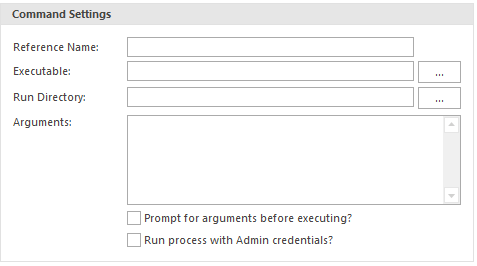Open Action Settings

Open commands are used to override the default LogViewPlus open behavior. Open commands can be configured in the open settings dialog discussed below.
Open Trigger

The open trigger is the filename pattern which is used when opening a log file to determine if a given open command should be executed. By default, the file name can contain a wildcard character - an asterisk *. This character will match one or more other characters. For example, say the name of your log file has a date suffix, something like MyApp_12.2.16.log. In this case, you could match the date part of the filename using the asterisk wildcard. Your pattern might be MyApp_*.log.
Usually, the asterisk wildcard is sufficient, but if you find you need more power to match your log file name, then you can use a regular expression instead. To do this, check the "Is Regex?" checkbox to let LogViewPlus know the search needs to be performed differently.
Command Settings

The basic command settings are:
1. Reference Name: The reference name is a display name that can be associated with this command configuration. The reference name helps you easily identify the command.
2. Executable: The full path to the target executable or batch file to be run.
3. Run Directory: If the process you are trying to start needs to be started from a specific directory, you can optionally configure the run directory.
4. Arguments: Arguments are the parameters used when starting the target application. LogViewPlus also supports a small set of optional argument templates.
5. Prompt for arguments: If the arguments used to start your target application change frequently you can optionally configure LogViewPlus to prompt you. This will give you the opportunity to change the arguments before the target application is executed.
6. Run as Admin: If required, you can optionally configure LogViewPlus to run the target application as Admin.
Post Execution

Post execution settings allow you to configure an action which should occur once the external command has completed. For example, opening a file or a pre-saved workspace. If an action is selected, you may need to provide additional detail such as the name of the target file. Target file names may use Argument Templates.
Save / Cancel
Once you are done configuring your command you will need to save your settings. Alternatively, if you're not happy with your command configuration, you can cancel it.